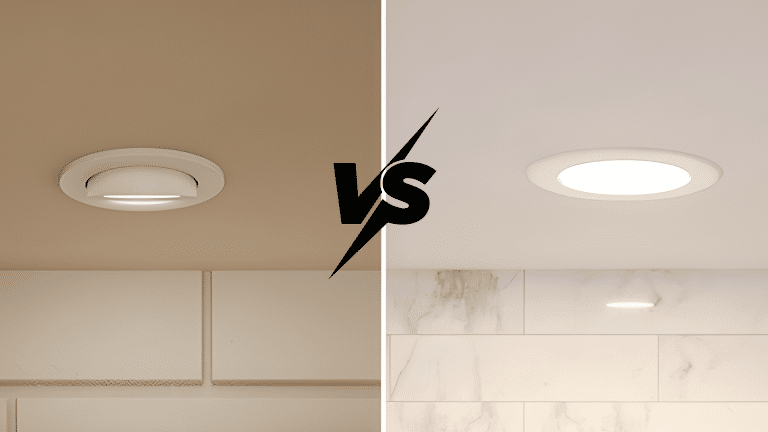Sump Pump Installation: What You Need to Know
Water damage in finished basements can destroy years of investment in just hours. Your living space, home theater, or family room becomes a costly disaster when water finds its way inside.
Many homeowners think their finished basement is safe from flooding, but statistics show that 98% of basements will experience some form of water damage.
The good news? A properly installed sump pump system can protect your finished basement from water damage, mold growth, and structural problems.
This complete guide will show you exactly how sump pumps work, when you need one, and how to choose the system.
From recognizing early warning signs to installation and maintenance tips, you’ll learn everything needed to keep your basement dry.
Let’s start building.
What Is a Sump Pump and How Does It Work?
A sump pump is a small water pump installed in the lowest point of your basement to prevent flooding. It sits inside a specially dug hole called a sump pit or basin that collects groundwater and excess moisture.
When water enters the pit and reaches a specific level, a float switch activates the pump, causing it to turn on automatically.
The pump then pushes the water through a discharge pipe that carries it away from your home’s foundation. This simple yet effective system operates 24/7 to keep your basement dry, protecting your finished space from water damage, mold, and structural issues.
Signs You Need a Sump Pump or Repair
- Water pooling or dampness in the basement – If you notice wet spots, standing water, or damp walls in your basement, you need a sump pump to remove excess moisture.
- Musty odors or visible mold/mildew – Strange smells or black/green spots on walls indicate too much humidity that a sump pump can control.
- Frequent basement flooding or a high water table – If your basement floods during heavy rains or you live in an area with a high water table, a sump pump is essential.
- Sump pump making unusual noises or running constantly – Grinding sounds, constant running, or strange noises mean your current pump needs immediate repair or replacement.
- Visible rust, old age, or failure to turn on – If your pump shows rust, is over 10 years old, or won’t start when tested, it’s time for a new one.
Types of Sump Pumps for Finished Basements
| Type | Description & Pros | Cons/Considerations |
|---|---|---|
| Pedestal | Motor above the pit, easy maintenance | Louder, more visible |
| Submersible | Sits in the pit, quieter, less obtrusive | Harder to access for service |
| Battery Backup | Operates during power outages | Extra cost, maintenance needed |
| Water-Powered | No electricity needed | Lower capacity, not for all homes |
| Combination | Primary + backup in one unit | Higher initial investment |
Sump Pump Installation: A Step-by-Step Guide
A step-by-step guide to installing a sump pump, ensuring proper setup to protect your basement from water damage.
Tools and Materials
| Step | Tools Needed | Materials Needed |
|---|---|---|
| Excavate Pit | Shovel, demolition hammer, bucket, shop-vac, safety gear | Gravel, sump basin |
| Add Gravel & Basin | Level, tape measure, bucket | Gravel, sump basin |
| Set Pump & Check Valve | Screwdriver, pipe wrench, pliers, utility knife | Sump pump, check valve, hose clamps, Teflon tape |
| Attach Discharge Pipe | Pipe cutter, drill, hole saw, marker | PVC pipe, fittings, PVC cement, silicone sealant, J hooks |
| Seal Basin Cover | Screwdriver, utility knife | Sealed basin cover, screws, rubber gasket |
| Connect Power | Electric drill, screwdriver | GFCI electrical outlet |
| Test System | Bucket (for water), rags/towels | Water |
Step 1: Excavate Pit
Dig a hole at your basement’s lowest point, measuring 22-24 inches deep and 18 inches wide. Use a jackhammer to break through concrete floors safely.
Select a location where water naturally flows and accumulates. Mark utility lines before digging to avoid damage. Clear away all debris and smooth the pit walls for proper basin placement.
Step 2: Add Gravel & Basin
Pour 2-3 inches of coarse gravel into the pit bottom for proper drainage. Place the sump basin inside and check that it sits perfectly level using a spirit level.
Pack additional gravel around the sides to secure the basin firmly in place. This base prevents the pump from sitting in mud or debris. Ensure the basin rim sits flush with your basement floor.
Step 3: Set Pump & Check Valve
Lower the sump pump into the basin and attach the check valve above the water level. The check valve stops water from flowing back into the pit when the pump shuts off.
Securely connect the pump’s discharge fitting to the check valve with the proper fittings. Test the float switch by lifting it manually to ensure smooth operation. Ensure the pump sits stably on the bottom of the basin.
Step 4: Attach Discharge Pipe
Install a PVC pipe from the check valve through your basement wall to the outside. Run the pipe with a slight downward slope to help water flow naturally.
Extend the discharge point 10-15 feet away from your home’s foundation to prevent water return. Secure all pipe joints with PVC cement to prevent leaks. Add a freeze-proof discharge fitting if you live in cold climates.
Step 5: Seal Basin Cover
Install a tight-fitting, sealed cover over the sump basin to control odors and moisture. Cut precise holes only for the discharge pipe and electrical cord using appropriate tools.
Use weatherstripping or gaskets around the cover edges for a complete seal. This prevents basement humidity and keeps debris out of the system. Select a clear cover to monitor water levels easily.
Step 6: Connect Power
Plug the pump directly into a dedicated GFCI outlet for electrical safety. Install the outlet at least 4 feet above the floor to ensure it remains above potential flood levels.
Never use extension cords, as they can cause voltage drops and failures. Consider adding an alarm system to alert you of pump problems. Test the GFCI outlet monthly to ensure proper protection.
Step 7: Test System
Fill the basin with water until the float switch triggers the pump to start. Watch water flow through the discharge pipe and check for proper drainage outside.
Run this test monthly, especially before storm seasons, to ensure reliability. Listen for unusual noises and check that the pump cycles on and off correctly. Maintain a log to track performance and promptly identify potential issues.
Additional Basement Waterproofing Tips
- Improve Exterior Drainage and Grading – Slope soil away from your foundation and clean gutters regularly to direct water away from your home.
- Use Vapor Barriers and French Drains – Install plastic sheeting on walls and interior drainage systems to control moisture and redirect groundwater.
- Keep Valuables Elevated and Protected – Store important items, electronics, and documents on shelves or in waterproof containers above potential flood levels.
- Seal Foundation Cracks and Joints – Fill any cracks in walls or floors with hydraulic cement or polyurethane sealant to prevent water entry.
- Apply Waterproof Coatings and Membranes – Paint basement walls with waterproof paint or install membrane systems to create a moisture barrier.
- Install or Upgrade Sump Pump Systems – Add a primary sump pump with battery backup to automatically remove water before it causes damage.
Do You Need a Sump Pump in a Finished Basement?
Yes, you absolutely need a sump pump in most finished basements, especially if you live in areas with high water tables, frequent rainfall, or poor drainage.
Unlike unfinished basements, where water damage affects only concrete and storage items, finished basements contain expensive flooring, drywall, furniture, and electronics that can be destroyed by even minor flooding.
A sump pump provides 24/7 protection against groundwater seepage, burst pipes, and stormwater infiltration.
The cost of installing a sump pump system ($500-$2,000) is minimal compared to the potential damage from basement flooding, which can easily reach $10,000-$50,000 in repairs and replacement costs.
If your basement stays dry now, that doesn’t guarantee it will remain dry during heavy storms or as your home ages.
Conclusion
Protecting your finished basement from water damage isn’t just about preserving your investment – it’s about keeping your family safe and healthy.
A properly functioning sump pump system serves as your first line of defense against flooding, mold, and structural damage that can cost thousands to repair.
Remember the key warning signs: water pooling, musty odors, unusual pump noises, or visible rust.
Whether you choose a pedestal, submersible, or battery backup system, regular maintenance and testing will ensure your pump works when you need it most.
Don’t wait until the next heavy storm to find out your basement isn’t protected. Take action today by assessing your current situation and installing the right waterproofing solutions.
Ready to protect your basement? Share your sump pump experiences in the comments below!
Frequently Asked Questions
How Many Hours Does It Take to Install a Sump Pump?
Installation takes 6-8 hours for DIY or 3-4 hours for professionals.
How Deep Do You Dig for a Sump Pump?
Dig 22-24 inches deep and 18 inches wide below your basement floor.
How to Properly Bury a Sump Pump Line?
Bury the discharge line 12-18 inches deep, sloping away from your home.
Where to Drill a Hole for a Sump Pump?
Drill through the basement wall 6-12 inches above floor level, sloping downward.









